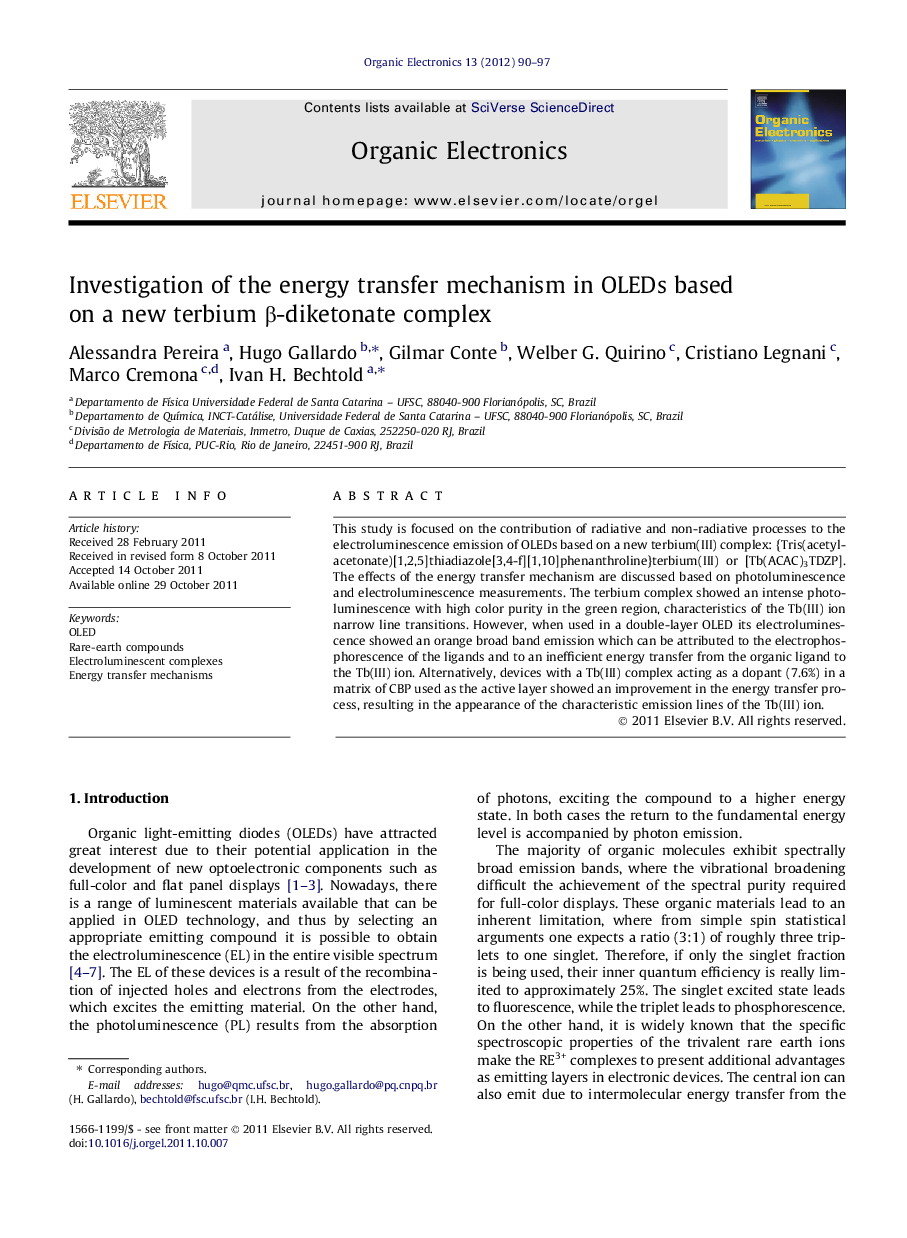| کد مقاله | کد نشریه | سال انتشار | مقاله انگلیسی | نسخه تمام متن |
|---|---|---|---|---|
| 1264628 | 972164 | 2012 | 8 صفحه PDF | دانلود رایگان |

This study is focused on the contribution of radiative and non-radiative processes to the electroluminescence emission of OLEDs based on a new terbium(III) complex: {Tris(acetylacetonate)[1,2,5]thiadiazole[3,4-f][1,10]phenanthroline}terbium(III) or [Tb(ACAC)3TDZP]. The effects of the energy transfer mechanism are discussed based on photoluminescence and electroluminescence measurements. The terbium complex showed an intense photoluminescence with high color purity in the green region, characteristics of the Tb(III) ion narrow line transitions. However, when used in a double-layer OLED its electroluminescence showed an orange broad band emission which can be attributed to the electrophosphorescence of the ligands and to an inefficient energy transfer from the organic ligand to the Tb(III) ion. Alternatively, devices with a Tb(III) complex acting as a dopant (7.6%) in a matrix of CBP used as the active layer showed an improvement in the energy transfer process, resulting in the appearance of the characteristic emission lines of the Tb(III) ion.
Figure optionsDownload as PowerPoint slideHighlights
► The energy transfer of a Tb(III) complex emitting layer in OLEDs was investigated.
► Bilayer devices presented the electrophosphorescence of the ligands.
► The co-deposited active layer with CBP improved efficiency in the energy transfer.
► Considerable color purity emission was achieved.
Journal: Organic Electronics - Volume 13, Issue 1, January 2012, Pages 90–97